in your camera? I mean like if you are inside and there is nothing but florescent lights and you have no flash... do you change your camera to florescent settings or fix it post processing? what if you DO have flash and are in a situation that calls for it combined with the florescents?
Navigation
Install the app
How to install the app on iOS
Follow along with the video below to see how to install our site as a web app on your home screen.

Note: This feature currently requires accessing the site using the built-in Safari browser.
More options
You are using an out of date browser. It may not display this or other websites correctly.
You should upgrade or use an alternative browser.
You should upgrade or use an alternative browser.
do you guys change the light settings?
- Thread starter Wiggly
- Start date
PhotoXopher
TPF Noob!
- Joined
- May 27, 2009
- Messages
- 3,472
- Reaction score
- 3
- Website
- www.lightartisan.com
- Can others edit my Photos
- Photos NOT OK to edit
I'm using auto white balance 99.99 percent of the time, in the rare instance I need to I can change it later in post (I shoot RAW).
LarissaPhotography
TPF Noob!
- Joined
- Dec 27, 2008
- Messages
- 529
- Reaction score
- 3
- Location
- Belleville, IL, USA
- Website
- www.larissaphotography.com
- Can others edit my Photos
- Photos NOT OK to edit
I usually use the presets. In the past I've used the Kelvin setting.
musicaleCA
TPF Noob!
- Joined
- May 23, 2009
- Messages
- 2,303
- Reaction score
- 0
- Location
- Vancouver, BC
- Can others edit my Photos
- Photos OK to edit
in your camera? I mean like if you are inside and there is nothing but florescent lights and you have no flash... do you change your camera to florescent settings or fix it post processing? what if you DO have flash and are in a situation that calls for it combined with the florescents?
I use presets. It saves me time in post.
Combining flash with fluorescent lights, or any light of a different temperature than the flash for that matter, requires the use of gels. And then life can become tricky with fluorescents, given that they shift colour throughout each cycle (60Hz here, 50Hz in Australia, Europe, or any other part of the world where AC power is output at 50Hz). And that means you're pretty limited, in having to use either 1/30, 1/60, or 1/125 to avoid shifts. Start going faster than that and WB between frames can get really funky (and no AWB won't save you in such an instance; not if you're using flash).
I suggest you read-up on Strobist's Lighting 101.
Village Idiot
No longer a newbie, moving up!
- Joined
- Mar 20, 2008
- Messages
- 7,269
- Reaction score
- 406
- Location
- Shepherdsturd, WV / Almost, MD
- Can others edit my Photos
- Photos NOT OK to edit
in your camera? I mean like if you are inside and there is nothing but florescent lights and you have no flash... do you change your camera to florescent settings or fix it post processing? what if you DO have flash and are in a situation that calls for it combined with the florescents?
I use presets. It saves me time in post.
Combining flash with fluorescent lights, or any light of a different temperature than the flash for that matter, requires the use of gels. And then life can become tricky with fluorescents, given that they shift colour throughout each cycle (60Hz here, 50Hz in Australia, Europe, or any other part of the world where AC power is output at 50Hz). And that means you're pretty limited, in having to use either 1/30, 1/60, or 1/125 to avoid shifts. Start going faster than that and WB between frames can get really funky (and no AWB won't save you in such an instance; not if you're using flash).
I suggest you read-up on Strobist's Lighting 101.
To add on to this, unless using some sort of high speed sync feature, most modern DSLR cameras have an x sync (the fastest possible shutter speed to shoot out without banding from the flash vs. shutter timing) of about 1/250. There are some who have a slightly slower, slightly faster, or a "trick to obtain different x syncs, but 1/250 seems to be about average for most of them.
AWB really isn't AWB, BTW. It shoots in a certain range, so if you're shooting inside with the AWB setting and still getting a very orange tine from the tungsten lighting, it's because the AWB setting shoots within a predefined Kelvin range and anything outside of that range will still have to be corrected.
Generally speaking though, light sources don't change too much within a given area, so switching between custom, K settings, and the others isn't a big deal and will save you time doing manual color temp adjustments in post.
musicaleCA
TPF Noob!
- Joined
- May 23, 2009
- Messages
- 2,303
- Reaction score
- 0
- Location
- Vancouver, BC
- Can others edit my Photos
- Photos OK to edit
Unless they're fluorescents. GRRRR!!!
RyanLilly
No longer a newbie, moving up!
- Joined
- Aug 27, 2007
- Messages
- 1,489
- Reaction score
- 10
- Location
- St. Louis, Missouri, USofA
- Can others edit my Photos
- Photos NOT OK to edit
I usually set a white balance in ºKelvin especially if I know the light source, then if I do tweak it in post its only a small change, and its easy enough to adjust a group of shots together since all of them are off by the same amount.
bigtwinky
No longer a newbie, moving up!
- Joined
- Oct 6, 2008
- Messages
- 4,821
- Reaction score
- 286
- Location
- Montreal
- Website
- www.pierrebphoto.com
- Can others edit my Photos
- Photos NOT OK to edit
Pretty much shoot on auto WB and in RAW ...and then adjust in post if needed
ssnxp
TPF Noob!
- Joined
- Oct 18, 2009
- Messages
- 104
- Reaction score
- 0
- Location
- California
- Website
- www.facebook.com
- Can others edit my Photos
- Photos OK to edit
I'm still a noob so I'm shooting in JPEG, therefore I'm learning to set the WB myself. I'm currently doing this with the white paper method.. don't have a gray card yet, but I might get an ExpoDisc later on.
musicaleCA
TPF Noob!
- Joined
- May 23, 2009
- Messages
- 2,303
- Reaction score
- 0
- Location
- Vancouver, BC
- Can others edit my Photos
- Photos OK to edit
I'm still a noob so I'm shooting in JPEG, therefore I'm learning to set the WB myself. I'm currently doing this with the white paper method.. don't have a gray card yet, but I might get an ExpoDisc later on.
Grey cards are useful because they're easy to expose for. White cards are easier to blow-out, and then they're useless for WB (because all your values are 255).
Are you using a white card, or a piece of white paper? Because paper that appears white to your eyes might not actually be white. Our eyes require a HUGE shift in colour from white to begin perceiving "off white"; the camera will pick-up smaller shifts.
Buckster
In memoriam
- Joined
- Sep 14, 2009
- Messages
- 6,399
- Reaction score
- 2,341
- Location
- Way up North in Michigan
- Can others edit my Photos
- Photos NOT OK to edit
Used to shoot in auto and adjust it in post. I've recently begun to set a custom white balance in camera when I begin a shoot sequence. I've done that with 18% gray cards, white walls, white shirts, whatever's handy. I've just started using a Micro-Disc white balance tool (similar to an Expo-Disc) in the last couple weeks.
ssnxp
TPF Noob!
- Joined
- Oct 18, 2009
- Messages
- 104
- Reaction score
- 0
- Location
- California
- Website
- www.facebook.com
- Can others edit my Photos
- Photos OK to edit
I'm still a noob so I'm shooting in JPEG, therefore I'm learning to set the WB myself. I'm currently doing this with the white paper method.. don't have a gray card yet, but I might get an ExpoDisc later on.
Grey cards are useful because they're easy to expose for. White cards are easier to blow-out, and then they're useless for WB (because all your values are 255).
Are you using a white card, or a piece of white paper? Because paper that appears white to your eyes might not actually be white. Our eyes require a HUGE shift in colour from white to begin perceiving "off white"; the camera will pick-up smaller shifts.
I grabbed a few different sheets of printer paper, index cards, napkins, tissues, etc. I found the ones that looked CLOSEST to "pure white" that my eyes could perceive, and I used them to run some tests. I even tried a "tissue over the lens and shot into the light source," but that turned out horrible.
After the very un-scientific tests, I found that one of the brands of printer paper produced the best results, in my eyes. So I thew a few into my backpack. All of the paper samples were better than the AWB though, at least for indoors (besides the tissue over the lens).
Should I invest in a gray/white card for now? Or should I just skip out on the card all together and save up for the expodisc (I know this is a controversial topic for some photogs
 )?
)?Most reactions
-
 430
430 -
 286
286 -
 276
276 -
 267
267 -
 216
216 -
 188
188 -
 177
177 -
 175
175 -
 169
169 -
 165
165 -
 159
159 -
 129
129 -
 117
117 -
I
97
-
 94
94
Similar threads
- Replies
- 7
- Views
- 225
- Replies
- 2
- Views
- 1K

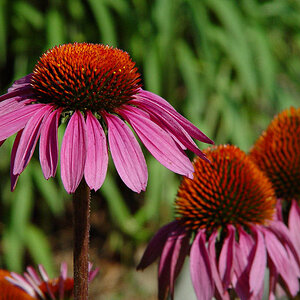
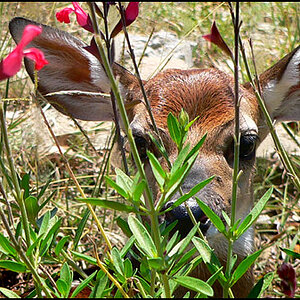

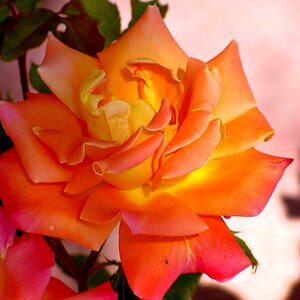
![[No title]](/data/xfmg/thumbnail/32/32180-aee1597d1cfb87ae220637f19420b65b.jpg?1619735235)
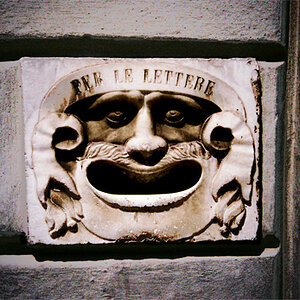
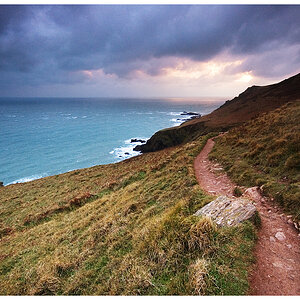
![[No title]](/data/xfmg/thumbnail/39/39291-a89dc472765e04f66f617dd9acc8030d.jpg?1619738958)
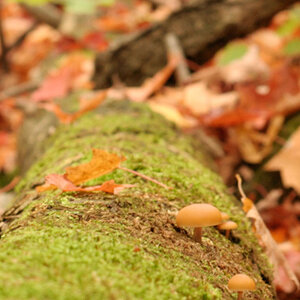
![[No title]](/data/xfmg/thumbnail/36/36423-4f4abd5f32da2219d4967c7a13b07a8c.jpg?1619737566)
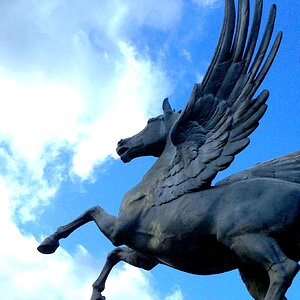
![[No title]](/data/xfmg/thumbnail/34/34139-e52deba745f42ba091907fcc460cd6db.jpg?1619736311)